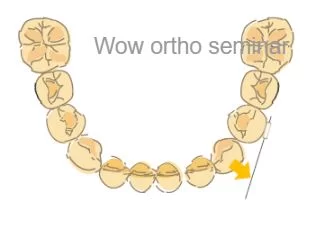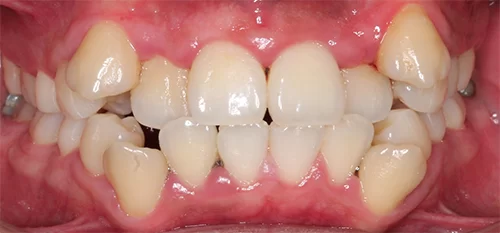
Why to learn orthodontic biomechanics?
You are interested in biomechanics if you’re reading this. Congrats.! It is a good choice.
But biomechanics sounds boring and difficult. Honestly, it is. But here are good news. You don’t need to go too deep. We are clinicians and not researchers. You need to learn at least bare minimum. Biomechnical knowledge will make your life easier. Two major reasons to learn it is
1. to prevent side effects from our mechanics
2. to move teeth efficiently and predictably
Fundamental biomechanical principles
Can you see that it is “bio-mechanics”. not “mechanics”? That means we need to consider biological response.
1. Light force orthodontics
What are different most between moving teeth and moving parcels? You can gently move parcels. Or you can slide it on the floor. As long as it is not broken, it doesn’t matter much. You moved it front point A to B.

But moving tooth is different. Tooth is a living creature. When you walk your dog, you’re not pulling him or her whole time. They walk by themselves. You just need to direct him or her by pulling the leash occasionally. We don’t drag the dog.

Moving tooth is similar. We just need minimal force to induce biologic response. Once the orthodontic force reaches threshhold, tooth can move. Force application duration is also important. Proffit states that 6 hours is the minimum time. If force is applied to tooth but it is less than 6 hours, teeth probably may not move.
Be careful! The same wire or power chain (elastomeric chain) can be light or heavy force depending on the condition.
Then, what determines heavy or light force?
- Periodontal support
- Friction between brackets and wire
When we are moving a single tooth, very light force is needed. It is especially true if the tooth is moving with round stainless steel wire.
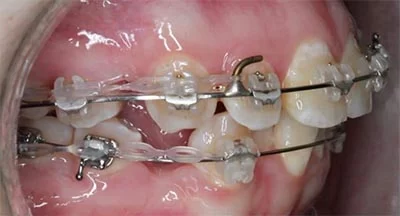
Look at the power chain in the lower arch. It looks very weak. You may wonder if it won’t work.
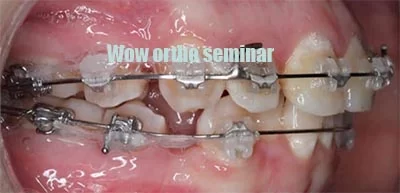
In 5 weeks, you can see reduced extraction space on both upper and lower.
Isn’t it amazing? Teeth move faster with light force.
If you apply heavy force, you are actually slowing down tooth movement. Tooth undergoes so called indirect resorption. When heavy force is applied, periodontal ligament (PDL) is crushed against the bony wall. Patients will experience pain and soreness. Blood vessels are occluded and oxygen is no longer supplied to the PDL. Then new osteoclasts should be mobilized from remote sites. It takes about a week or two. During this time, the tooth doesn’t move.
2. Target tooth movement
Deliver orthodontic force only to teeth that need to be moved. And avoid round-tripping. This will reduce risk of root resorption. We maintain the position of tooth that doesn’t need to be moved.
Molar de-rotation with transpalatal arch (TPA)
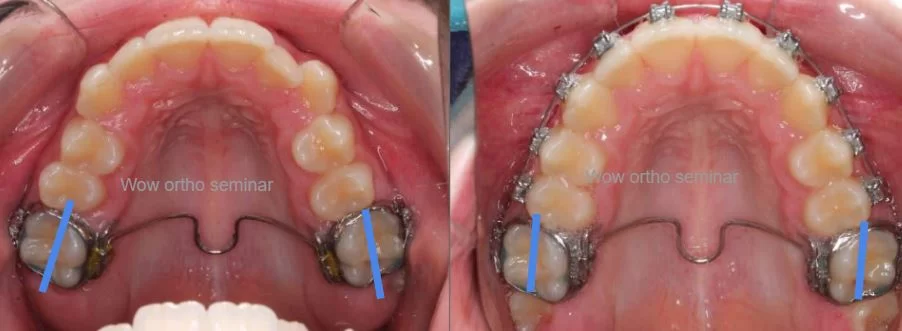
Class II molar relation can be improved if MB cusp of upper 1st molars is distally moved. First molar rotates using palatal cusp as a pivot. Transpalatal arch (TPA) is very useful to de-rotate upper molars. If we try to de-rate 1st molars with continuous arch instead of TPA, it takes longer and side effects can occur- that is constriction of upper arch because 2nd premolars are pulled lingually.
Preformed transpalatal arch
I use prefabricated TPA of GC orthodontics. They have mesial loop and distal loop. I use mesial loop.
Mesial Loop Palatal Bars (5/pkg)

Made from very resilient .036’’ stainless steel wire. Accurately formed posterior arms make insertion into the sheaths and
removal easier. Available with a mesial or distal loop. Also available with 45° angulated ends. Sold in packs of 5.
Constriction of lower molars with precision lingual arch
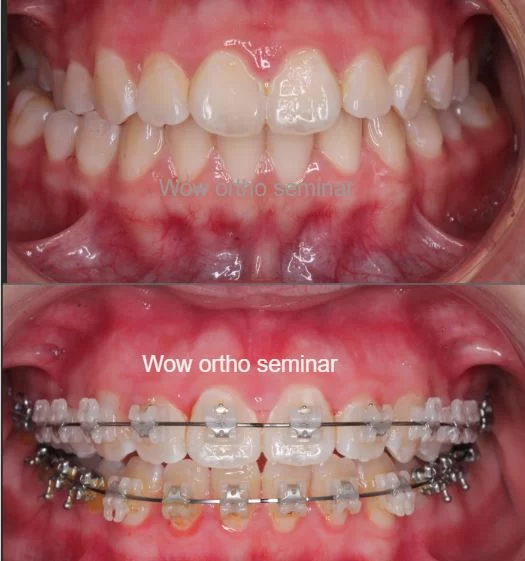
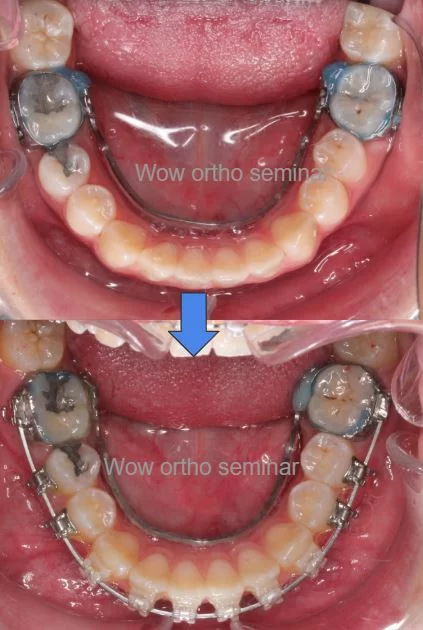
Biomechanical consideration before bonding brackets
Evaluate canine angulation (mesio-distal tip) and bucco-lingual position
Sometimes, I need to bond partially instead of bonding the entire arch. This case illustrate why.
How would you bond this case? This was an extraction case. It may be still OK to bond all the teeth at the same teeth. But I like to minimize round-trip movement. Why?
- Round trip movement can contribute to more root resorption. Why do we move tooth that doesn’t need to move initially?
- Treatment time can be reduced. Instead of moving tooth from A to Z to B, we can move tooth faster if we move it from A to B directly.
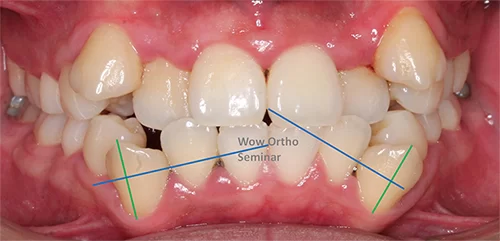

If we extract 4 first bicuspids and bond all the teeth at the same time, what can happen to adjacent teeth?
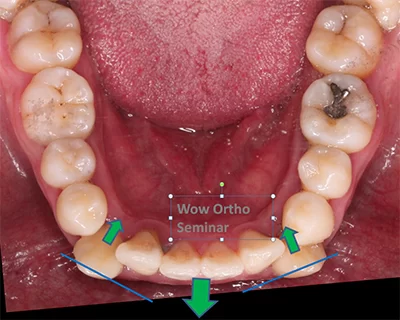
From occlusal view, when 6 anteriors are bonded together, how will teeth move? Canines are very strong teeth and 4 incisors may be pushed forward. The patient is in Cl III and we don’t want to make his bite edge-edge.
Our goal is only retracting canines distally with maximum anchorage.
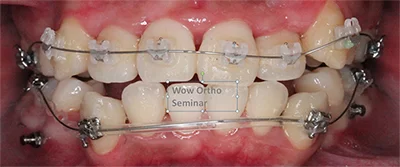
In this way, no adverse force is applied to 4 lower anteriors. Lower canine angulation is considerably improved.
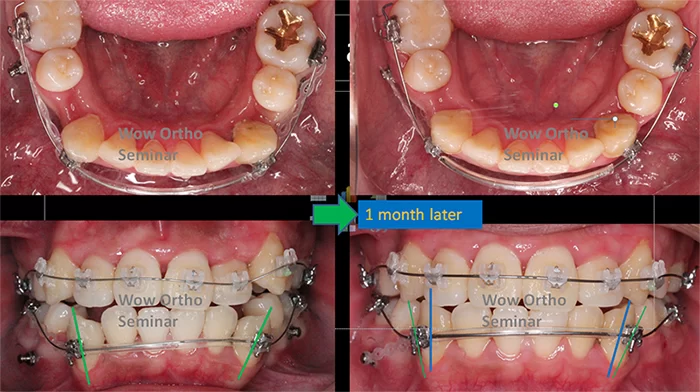
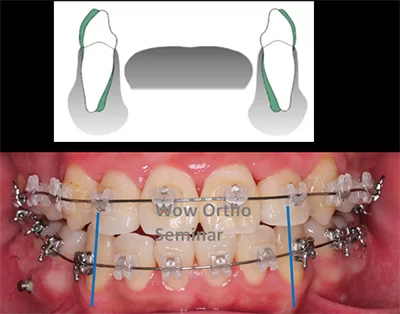
Canine is the king. Watch out before bond
If a canine is rotated significantly, be careful. If you use continuous archwire technique, It can create a posterior crossbite.
When compared to the lower right side, the lower left canine is considerably rotated. Lower left 1st premolar is forced to move buccally.
How can we maintain arch form?
So how can we prevent this?
If you want to minimize buccal movement of the lower 1st premolar, you can bond it 2-3 months later when the canine is de-rotated a bit..
Continuous archwire technique is convenient but we need to know the side effects.
Arch expansion with bracket positioning
Can we control arch form by light wire?
Can you expand canines just with bracket positioning? Yes, you can. I published a presentation in 2018. (Korean association of orthodontists congress)

If we bond 1st premolar brackets distal to the center, canines will move buccally. This occurs when we bond brackets only from 1st premolars to 1st premolars.
Isn’t it amazing?
Left picture. Similarly, canine will move lingually 1st premolar bracket is bonded mesial to the center of 1st premolar.

You can see lower left canine has moved bucally even with 012 NiTi wire was used.
Why canine moved bucally? Why didn’t 1st premolar move lingually?
It is because the last tooth that has bracket does not easily move. In this case, the terminal tooth was 1st premolar.
Biomechanical considerations for high canine
Continuous arch vs segmented arch technique
I use continuous arch technique for majority of time. But sometimes, That means, I bond brackets and place archwire on all the teeth. But sometimes I have to use segmented arch technique. Why? It is to avoid side effects.
Let’s check at this case.
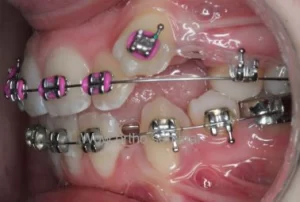
If you connect archwire in the upper left canine, what will happen?
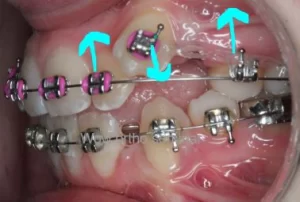
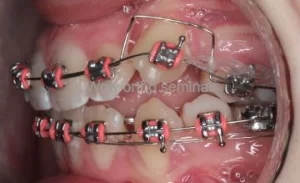
Instead I used piggy back technique 016 NiTi was placed on all the teeth except the canine. 012 NiTi is placed from incisor to 2nd premolar.Note that NiTi wires were used instead of stainless steel wire. .
Biomechanical consideration for space closure
It is recommended that extraction space is closed with rectangular stainless steel wire. In this way, side effects of space closure such as bowing effect is more predictably prevented. However, we often need to start closing extraction space with NiTi wires. This is especially true when anterior teeth are crowded. At this condition, rigid archwire can be placed after slight retraction of canines.
If you choose to retract canines with NiTi wire, you need to bear in mind a few points. Let’s find out what are possible side effects and how we can reduce them.
Side effects on the sagittal plane
Bowing effect
White arrow: Initial sign of bowing effect. Extraction space is closed with 16×22 NiTi wire. Can you see the canine crown has tipped distally?
How to prevent bowing effects?
Bowing effects doesn’t occur whenever we use round wire or NiTi wire. If you monitor closely, you can try closing space with round wire or NiTi wire.
Upper 1st premolar extraction space is closed with 018 NiTi wire and 018 SS wire.
Even with NiTi round wire, the bowing effect is not readily observed.
Side effects on the horizontal plane
When compared with the left picture, the arch form was distorted in the right picture. What happened?
Upper lateral incisors and canines were retracted while round NiTi wires were placed. Light elastomeric chain (not powerchain), called Prochain, was placed between lateral incisors to 1st molars. Because NiTi wire was not rigid enough, left first molars rotated mesially (counter-clock wise) and canine rotated clockwise. Consequently, 2nd premolars are brought palatally. Inter-molar and inter-premolar distance became reduced.
How to recover arch form
One of the easiest ways to restore arch form is placing light NiTi wire without any power chain or elastomeric chain. In the picture below, arch form is quickly getting restored with 014 NiTi wire.
Absolute intrusion of anterior teeth
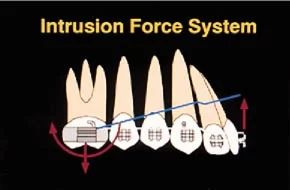
You can use the reverse Curve of Spee NiTi wire. Bend the wire a little bit to produce 40 grams of intrusion force on each of 4 anterior teeth.
We don’t need an orthodontic mini-screw to do absolute intrusion.
An intrusion arch will tip the molars back while simultaneously
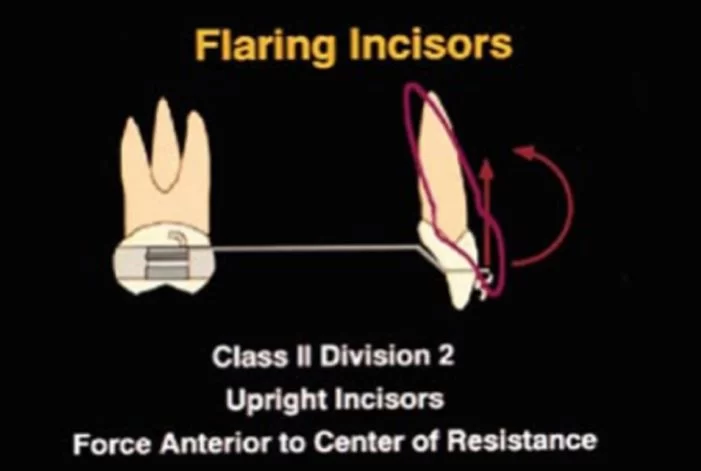
When anterior flaring is favorable, CiA is not cinched back, and can be ligated directly into incisor brackets.
References
Nanda R, Marzban R, Kuhlberg A. The Connecticut Intrusion Arch. Journal of clinical orthodontics: JCO. 1998 Dec 1;32(12):708-15.
Sana, S., Bansal, A., Sami, L., Tapashetti, R. and Gaikwad, S., 2014. Anterior deep bite malocclusion treated with connecticut intrusion arch: Biomechanical consideration. Journal of Clinical and Diagnostic Research: JCDR, 8(5), p.ZD30.
Schwertner A, Almeida RR, Gonini A, Almeida MR. Photoelastic analysis of stress generated by Connecticut Intrusion Arch (CIA). Dental Press Journal of Orthodontics. 2017 Jan;22:57-64.
Relative intrusion of anterior teeth

Deep bite, Cl III malocclusion, midline diastema
Solution

Mini-tube appliance with 012 thermo-active NiTi wire.
In daily orthodontic practice, we commonly see patients when there is not enough room to bond brackets in the lower incisors. What do you do in those cases?
In the past, I bonded a bite turbo on the occlusal surface of molars. But I stopped using the bite turbo since I use the mini-tube appliance.

Lower mini-tube appliance is a much better alternative for bite turbos.
Tooth drifting
Tie teeth together even if you don’t move them. They may run away.
Teeth can move when space is created even if you don’t move it. That’s why you need to tie the teeth together even if you’re not moving them.
Lower left 1st premolar (#34) was extracted in this patient. Retraction of #33 was started using a power chain.
Quiz) What can happen to #43 (LR canine)?
Answer) #43 drifted mesially.
As #33 is retracted, other teeth also started to drift following #33. Even #43 has moved mesially.
So, you need to pay attention to all the teeth while you create space, especially in the extraction case. Teeth tend to move around as kids. When there is free space, they tend to play around.
In this case, #43 should have tied to #44,45,46. Lower four incisors can be tied together as well.
Molar uprighting without extruding it
When first molar is lost, 2nd molar tends to tip and drift mesially. This makes it difficult to place implant or do prosthetic rehabilitation. Unlike adolescent, molar uprighting is challenging in adults.
Dr. Zachrisson summarized various methods to upright molars. Recently, mini-screw or TAD provides alternatives to this approach. If you don’t want to use TAD, Sander’s spring is the best solution because you can intrude or prevent extrusion of 2nd molars while uprighting it.
The brand name is Memory Titanol® spring for uprighting of molars. A super-elastic Titanol® wire is connected to a steel wire via a cimpable stop. With this material combination the pseudo elastic areas of the spring can be used optimally, and consistent moments and biologically favorable forces can act on the molars.
Zachrisson BU, Bantleon HP. Ask an expert: Optimal mechanics for mandibular molar uprighting. World J Orthod. 2005;6:80-7.
